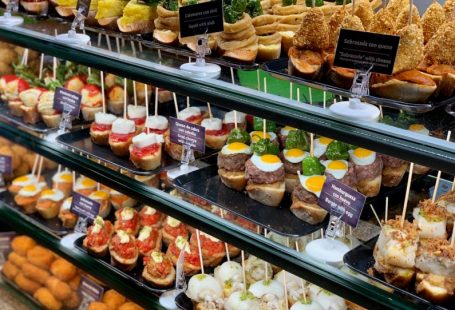Barbecue, a culinary tradition deeply rooted in cultures around the world, offers a fascinating glimpse into the diversity of cooking techniques and flavors across different societies. From slow-smoked meats in the southern United States to skewered kebabs in the Middle East, traditional barbecue methods vary widely but share a common thread of bringing people together over delicious, smoky fare. Let’s explore some of the unique barbecue techniques employed in various cultures, showcasing the rich tapestry of flavors and traditions that make barbecue a beloved culinary art form worldwide.
### American Barbecue: Low and Slow
When it comes to barbecue, few places are as renowned as the southern United States. In regions like Texas, the Carolinas, and Kansas City, barbecue aficionados swear by the “low and slow” method of cooking meat. This involves smoking cuts of meat—usually pork or beef—over a low heat for several hours, allowing the flavors to develop and the meat to become tender and juicy. Each region has its own signature style of barbecue sauce, ranging from tangy vinegar-based sauces in the Carolinas to sweet and sticky molasses-based sauces in Kansas City.
### Argentine Asado: The Art of Grilling
In Argentina, barbecue—or asado, as it is known locally—is a social event that revolves around the ritual of grilling meat over an open flame. Argentine asado typically features an array of meats, including cuts like chorizo, morcilla (blood sausage), and various cuts of beef such as asado de tira (short ribs) and vacío (flank steak). The meats are seasoned simply with salt before being grilled over a wood fire, imparting a smoky flavor that is quintessentially Argentine. Asado is not just a meal but a cultural experience that brings friends and family together to enjoy good food and company.
### Korean Barbecue: Tabletop Grilling
Korean barbecue, known as gogigui, takes a more interactive approach to grilling by featuring tabletop grills where diners can cook their own meats to their liking. Thinly sliced cuts of marinated beef, pork, or chicken are grilled over a gas or charcoal grill built into the dining table, allowing diners to customize their meal as they go. Accompanied by an array of banchan (side dishes) like kimchi, pickled vegetables, and ssamjang (spicy dipping sauce), Korean barbecue is a communal dining experience that combines bold flavors and DIY cooking.
### South African Braai: Cooking Over Flames
In South Africa, the tradition of braai (barbecue) holds a special place in the hearts of many. A braai is more than just a method of cooking; it is a social gathering that celebrates the art of cooking meat over an open flame. Whether it’s succulent boerewors (sausage), tender lamb chops, or spicy peri-peri chicken, South African braais feature a variety of meats seasoned with a blend of spices and cooked over wood or charcoal fires. The smoky aroma of the grill, coupled with the convivial atmosphere of friends and family coming together, makes the braai a cherished tradition in South African culture.
### Japanese Yakitori: Skewered Delights
In Japan, yakitori—grilled skewers of chicken—is a popular street food that showcases the simplicity and artistry of Japanese barbecue. Skewered pieces of chicken, often alternating between meat and vegetables, are grilled over charcoal and brushed with a savory soy-based tare sauce as they cook. The result is tender, flavorful skewers that are enjoyed as a snack or paired with rice and pickles for a more substantial meal. Yakitori joints in Japan range from casual street stalls to upscale izakayas, offering a wide range of skewered delights for diners to savor.
### A Tapestry of Barbecue Traditions
Traditional barbecue techniques across cultures offer a glimpse into the diverse ways in which people around the world celebrate the art of cooking over fire. Whether it’s the slow-smoked meats of the American South, the interactive grilling of Korean barbecue, or the communal spirit of a South African braai, barbecue traditions bring people together to enjoy good food and company. As you explore the world of barbecue, remember that each culture’s unique approach to grilling reflects a rich culinary heritage passed down through generations—a tapestry of flavors and traditions that unite us in our love of barbecue.





